Weston
Post #1038 • August 23, 2007, 10:01 PM • 27 Comments
Los Angeles - Recently Studiosavant featured an interview with Clement Greenberg in which he said:
...what I've noticed about good photography is that a good photograph always has some evidence of humanity in it. So you can get a good photograph of a road because humans have built the road. And here's where the subject matter determines everything and not formal qualities.
The interviewer suggested Edward Weston as a counterexample. Greenberg didn't bite. "He's too arty. I don't like his stuff."
Anyone still confused about whether Greenberg formed his opinions a priori or a posteriori [Latin corrected, thank you, Hovig - F.] need look no further. As for Weston, artiness proves no great liability while looking back on his work at a time when photography embraces the phoniest contrivances. With 150 photos on display in Edward Weston: Enduring Vision, spanning his varied career and including his wide circle of fellow photographers, something will assuredly land favorably on your eye.
Greenberg may have gotten it right about the medium, at least as it relates to this artist. As much as I enjoy the landscapes, the vegetable images and still lifes have no virtues not also present in the nudes, fourfold. The female form agreed with Weston's temperament. This shows in the work, and it shows in the curatorial effort, which included runs of redoubtable photos by Tina Modotti, Betty Katz, Imogen Cunningham, Sonya Noskowiak, Nata Piaskowski, and Margrethe Mather, noting the romantic entanglements along the way, which finally grow too numerous to track. Throw in the males, Ansel Adams, Minor White, Fred Sommer, son Brett Weston, and more, and you get the impression that Weston's circle comprises the whole of early- to mid-20th Century American photography, whose aficionados will not want to miss this exhibition.
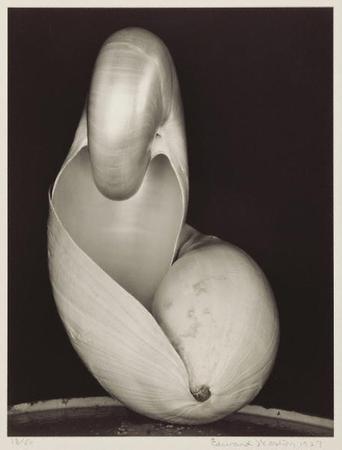
Edward Weston (American, 1886-1958): Two Shells, negative 1927, printed about 1933, gelatin silver print, 9 1/2 x 7 1/4 inches, © J. Paul Getty Trust, The J. Paul Getty Museum, Los Angeles, California
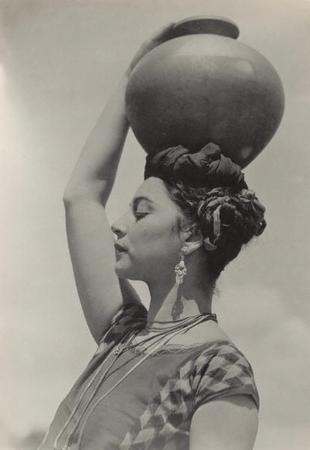
Edward Weston (American, 1886-1958): Tehuana, Rosa Roland, 1926, gelatin silver print, 9 7/16 x 6 1/2 inches, © 1981 Arizona Board of Regents, Center for Creative Photography, The J. Paul Getty Museum, Los Angeles, California
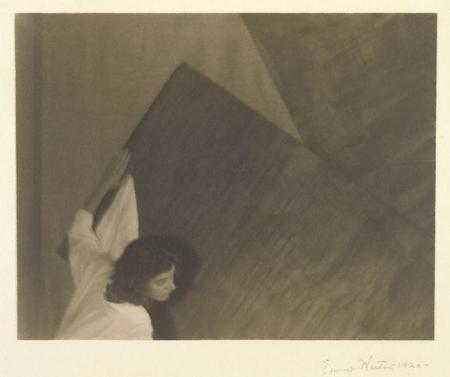
Edward Weston (American, 1886-1958): Betty Katz, Los Angeles, 1920, palladium print, 7 1/2 x 9 9/16 inches, © 1981 Arizona Board of Regents, Center for Creative Photography, The J. Paul Getty Museum, Los Angeles, California
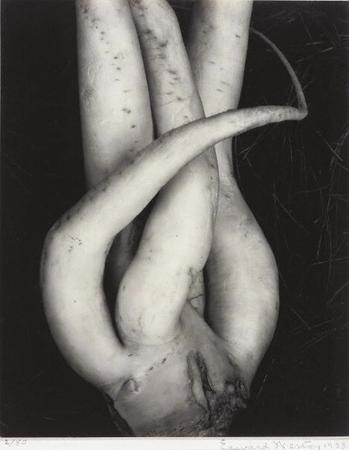
Edward Weston (American, 1886-1958): White Radish, 1933, gelatin silver print, 9 1/2 x 7 5/8 inches, © 1981 Arizona Board of Regents, Center for Creative Photography, The J. Paul Getty Museum, Los Angeles, California
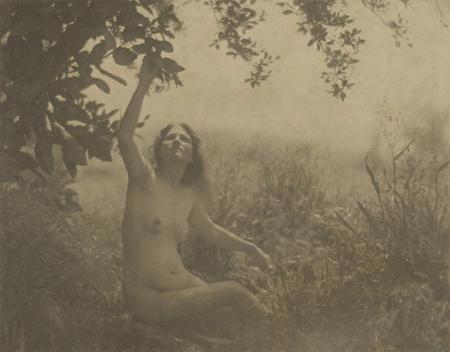
Edward Weston (American, 1886-1958): Nude, Flora Chandler Weston, negative 1909, printed 1910, platinum print, 11 1/8 x 14 inches, © 1981 Arizona Board of Regents, Center for Creative Photography, The J. Paul Getty Museum, Los Angeles, California
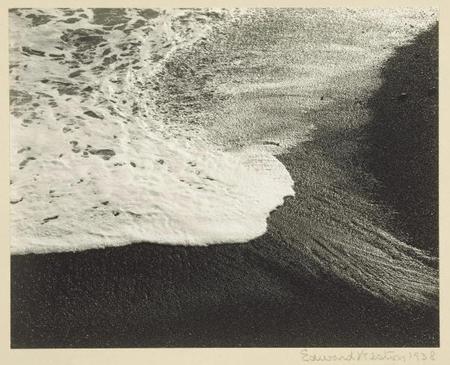
Edward Weston (American, 1886-1958): Point Lobos, November 1938, gelatin silver print, 7 5/8 x 9 5/8 inches, © 1981 Arizona Board of Regents, Center for Creative Photography, The J. Paul Getty Museum, Los Angeles, California
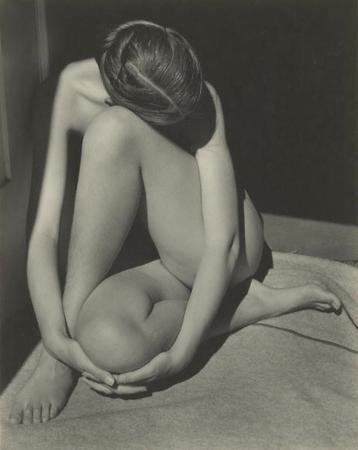
Edward Weston (American, 1886-1958): Nude, Charis Wilson, 1936, gelatin silver print, 9 1/2 x 7 9/16 inches, © 1981 Arizona Board of Regents, Center for Creative Photography, The J. Paul Getty Museum, Los Angeles, California
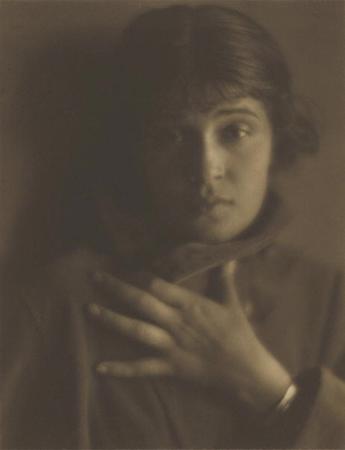
Edward Weston (American, 1886-1958): Tina Modotti, 1921, palladium print, 9 1/2 x 7 1/2 inches, © 1981 Arizona Board of Regents, Center for Creative Photography, The J. Paul Getty Museum, Los Angeles, California
2.
August 24, 2007, 8:14 AM
Thanks for reading, and the link, Franklin. Terry Fenton deserves the credit for posting the interview, which I swiped from his Greenberg page.
I hate that shadow on the (whittled) arm of Charis Wilson, on the left side of the picture... Point Lobos is ok, though. I can't deal with those washed-out looking prints, though... I gots to have my black blacks...
3.
August 24, 2007, 8:16 AM
I like Weston's photos better than Greenberg did, probably because I like anything that displays technical proficiency, but he nailed it when he called them "arty".
As for "So you can get a good photograph of a road because humans have built the road. And here's where the subject matter determines everything and not formal qualities." we must remember this was an oral interview - he never would have sat down and written this.
My experience with good photographs is that they come up in surprising places, places often out of the "art" context. Maybe that's because they are so abundant in our culture. Sometimes I will even "see" a great photo in something I am casually looking at, like a house or a car or a crowd. This mystifies me, and puts a twist in the way I think about art.
4.
August 24, 2007, 8:56 AM
To me a photograph is the purest type of formal art possible. It is almost nothing except form. Greenberg seems to be saying precisely the opposite -- that a photo is entirely conceptual and not formal -- which doesn't make sense to me. In Opie's case, far from putting a twist in how he sees art, I think the concept of "good photo as purely formal work" is a perfect match to it.
I'm talking here about the concept of a "good photo." A friendly picture or a newsworthy snapshot is a conceptual work, of course, or an illustration -- it portrays an idea or a fact, for the sake of communication or personal connection -- but for a viewer to say "wow, that's a good photo," and rate the image as good per se, the photo must be formally sound, i.e., the shapes and colors must be in "the right places." In fact color photos were not taken seriously as art until recently, so seriously was the idea of "pure form" held.
So I'm kind of surprised that Greenberg would call conceptual that which I think is most purely formal. And that Opie wouldn't think the same way....
5.
August 24, 2007, 10:02 AM
I have a problem with the term "conceptual" here, becuase of its more specific meaning of "ideas" in art language. Greenberg meant literalness, or content, or narrative, which should indicate something different from ideas oor concepts.
He did indeed say "something opposite", that form doesn't matter, as you observe, but part of the point of what I wrote above is that he would immediately emend this if he had written it. I can even hear him saying "Did I say that?"
My "eye photos" do not put a twist on how I see art but how I think about it; they puzzle me because they are so extremely "found", which seems logically to suggest that there are "ideal forms" of some sort out there in the world. This goes against my belief that art is entirely humanly formed, "person to person", arising from the life within us and going to the same place. Maybe I will figure it out some day.
Of course any picture is "nothing but form", but form does not fully comprise content. If the form in a photo coalesces into recognizeable images than that is part of the content and must be taken into account esthetically. When we talk about "pure form" in art we usually mean art from which all recognizeable form has been eliminated.
6.
August 24, 2007, 11:58 AM
I can see the distinction between concept and narrative.
Is there also a distinction between recognizable forms and "elemental" ones? Maybe you don't recognize a form figuratively as a tree or a grizzly bear, but it might feel in the abstract like something looming over you. It might not look like "a road," but it might feel like something that leads somewhere.
I'm not saying abstract art requires Rorschach analysis. Absolutely not. I also don't think it necessarily echoes nature. I'm just saying some forms might not be "recognizable," but might still work in some internal way.
I don't know whether elemental forms are primitive, learned, universal or cultural, or frankly whether they even really exist, but if we're exploring uncharted waters here, I have a feeling they're why art and photography work the way they do (speaking now only of form), and why you're able to see good art in "found" scenes.
Maybe humans don't create art but discover it.
7.
August 24, 2007, 4:20 PM
"Maybe humans don't create art but discover it."
That's a good way to put it. It is hard to accept because our egos don't like it and our art-making practice does not seem on the surface to indicate that is what is happening. But my experience making art convinces me more and more that something like this is going on.
8.
August 24, 2007, 4:26 PM
It's hard for me to accept because it presupposes that art exists independently of human culture. I think what's happening is that our brains feel pleasure when they recognize visual patterns, and art capitalizes on that phenomenon. Otherwise nature just does its thing quite heedlessly of us.
9.
August 24, 2007, 4:41 PM
I don't think my proposal has been contradicted. Agreed that: our brains feel pleasure when they recognize visual patterns; and also that: art capitalizes on that phenomenon, but how does one connect the dots?
Does one sit at a desk and compute images which will generate pleasure, or does one wait for inspiration and/or tinker until a successful image appears? In other words, does one know what the elemental forms are, and manipulate them intentionally, or does one experiment until one's internal pattern recognizers approve?
The only declaration that I'm willing to make -- and frankly not all that forcefully -- is that I believe there are elemental forms that reside deep within us. I can't say what percentage of them are encoded into our DNA, burned into us from the general environment, or trained into us by our specific culture, but given a set of humans who recognize these forms, a photo can excite them just as well as a masterfully-crafted painting.
10.
August 24, 2007, 4:50 PM
Opie -- There's still plenty of room for ego. I had a professor who once said you'll never stop making mistakes, you'll just learn to catch them faster. If art is only discovery, a "good artist" can be proud that they are in better touch with their artistic sensors, and that they can generate work that satisfies more than anyone else. A superior sense of discovery, in any field, is nothing to be ashamed of.
11.
August 24, 2007, 5:07 PM
Oh, sure. I have long since learned to cope with my ego by telling it "I made a good painting, so what's the problem?" I just mean in general. There are people you can tell this discovery idea to who will reject it violently. I have had several such discussions.
Franklin, it is entirely human but you have to realize that we have grown in terms of the conditions of the earth since we were microbes in the swamp. We are literally "of the world". Everything out there is us. We just happen to be the part that walks around and thinks about it. The discovery idea doesn't separate art-making from human culture; somehow it just makes the matter deeper and more recondite. AND more interesting.
12.
August 24, 2007, 5:11 PM
The "elemental forms" idea is a philosophical can of worms, by the way. The basic problem is that it presupposes value before it is in evidence.
13.
August 24, 2007, 5:34 PM
Does one know what the elemental forms are, and manipulate them intentionally, or does one experiment until one's internal pattern recognizers approve?
I vote for the latter. The forms probably don't do much by themselves; this is the mistake of the people who believe too much in the Golden Section. There has to be enough variation to be interesting and enough continuity to be meaningful.
...it is entirely human but you have to realize that we have grown in terms of the conditions of the earth since we were microbes in the swamp.
Well, there's the rub. We're pattern recognizers in a world in which life manifests as pattern, and it's not impossible to characterize art as part of the extended phenotype for humans. I kind of like the idea, even. (I got it from Timothy Comeau.) Calling it "discovery" presupposes art's prior existence to its recognition as such, though, which sounds pretty odd. I think art, or the urge to make art, arises as a response to sensory input which is the product of patterns, and yet happens in an indifferent, meaningless way as far as its perceivers are concerned. If Elaine Scarry is right, and beauty is that which inspires a copy of itself, then art latches on to certain pleasurable or rewarding experiences and the remainder experiences get discarded from notice. Talented people, I would guess, detect more to latch on to. You're right in that it's mysterious stuff.
14.
August 25, 2007, 7:06 AM
"not impossible to characterize art as part of the extended phenotype for humans."
Not just "not impossible" but essential. Art-making in its various forms goes back tens of thousands of years. It is integrated into our social evolution. We have been at it a long time and have a civilization that supports it unreservedly so we should start making serious efforts to understand what art is and what it does.
What we have done so far is pretty pitiful. There is tremendous resistance. The best we have is Kant, and he just shrugged and said "it's all intuition".
"pattern recognition" and "fundamental forms" and much else ties into it but at bottom art has to be some kind of materially expressed sublimation of life itself, somehow, in some way. I have been trying to write something about this but I am afraid I lack the patience and the scientific approach and knowledge needed to get at it.
In any event, the experience of "finding art" is certainly a big clue that must be considered.
15.
August 25, 2007, 8:06 AM
opie: I don't think the "scientific approach" will get you or anyone else very far in wrapping an explanation around art. Science starts out with quantification and measurment. Art resists measurment and is most likely not a quantity of any sort. Art is "materially expressed" alright, but when the material is measured, the art so expressed slips away to another realm, safely out of the grasp of any tool that can be used for measurment.
Dare I say it: art is spiritual. Not in the religious sense, but even then, the term "beatific vision" (=heaven) has always meant something to me when it comes to my experience with art that is good. Nietzsche, I think, said something to the effect that most of what is important in life gets down to aesthetics.
16.
August 25, 2007, 8:19 AM
Calling it "discovery" presupposes art's prior existence to its recognition as such, though, which sounds pretty odd.
I could argue it either way.
No: A specific work of art does not pre-exist any more than a specific computer program or movie does. But its conditions for success do. (Meaning the fundamental forms and ideas that I suggested above, and that Opie has been trying to pin down for a long time.)
So even if we can't pin down these fundamental entities, we can accept that they exist, and be happy to know there are uncountable numbers of combinations, many of which have yet to be "discovered." Discovery applies to either the forms or their combinations.
This also relates to your idea of artistic sub-communities. Each sub-community has discovered a set of forms and combinations that work, and they work within those particular parameters to maximize the "artistic-ness" of the works they can pull out.
So maybe the number of fundamental forms and visual ideas is finite -- or the set of them only changes very slowly -- but there are enough of them, and the number of their combinations is sufficiently innumerable, that we can safely continue to innovate among them.
Yes: There are only so many combinations, and we will one day run out. (If we haven't already). Shakespeare and Michelangelo are still relevant. Their forms and combinations worked then and work now. Their results are off the table because they're already done.
History books only pick the best examples of past eras, the others being variations on the same theme, i.e., reworkings of the same combination of fundamental forms and ideas. One generation often looks back upon the works of previous generations and tries to re-interpret them, but ultimately only make small modifications rather than large break-throughs.
So it's possible that the number of masterpieces is finite after all.
17.
August 25, 2007, 8:44 AM
Catfish, you seem to be talking about determing the value of art scientifically, which is impossible because art is by definition appraised intuitively. I am talking about what art "is" and what it does. This can be determined scientifically, at least part way. It's just a matter of doing it properly.
Hovig "masterpieces" are as infinite as genius and what is available to it.
18.
August 25, 2007, 9:51 AM
This is good stuff, guys. Glad to have artblog.net back for grown up conversations about art.
Greenberg and Schopenhauer both took Kant forward on some of this; In biology, Dawkins, with his 'memes' and the 'extended phenotype' stuff come in, here, as does the research into human psychology (humans preference for blue, and women's inclination towards pinks)... I want to add something more to this discussion, but I have to leave for a wedding (and my girlfriend is waiting in the car for me as I type)....
Carry on!
19.
August 25, 2007, 11:08 AM
No opie, I'm talking about determining what art "is". Although, as a congenital lumper, I'd say there isn't much difference between apprasing art and getting at what it is. That said, science must start with quantities and art doesn't fit that model very well, if at all.
20.
August 25, 2007, 11:13 AM
I am assuming it was not your own wedding, Marc. That would be devotion to the blog, fer sure.
Assuming you return sober, let us know about some of that Schopenhauer & Dawkins stuff.
21.
August 27, 2007, 8:41 AM
"masterpieces" are as infinite as genius and what is available to it.
I'm just having some fun thinking about the notion of "what is available."
22.
August 27, 2007, 9:24 AM
You know, paint, canvas, metal, miscellaneous ideas, things to look at, methods. Things like that.
23.
August 27, 2007, 5:26 PM
"As for "So you can get a good photograph of a road because humans have built the road. And here's where the subject matter determines everything and not formal qualities." we must remember this was an oral interview - he never would have sat down and written this."
Also, I was assuming, Clem and a few artists shootin' the shit in his hotel room, they'd have had a few drinks, too...
"Sometimes I will even "see" a great photo in something I am casually looking at, like a house or a car or a crowd. This mystifies me, and puts a twist in the way I think about art."
Isn't this just what Greenberg meant by 'Raw' Art? It's the solipsistic aesthetic experience, distinguished from 'formalized' art, which, embodied as an object, delivers an abiding, communicable art experience.
"Franklin, it is entirely human but you have to realize that we have grown in terms of the conditions of the earth since we were microbes in the swamp. We are literally "of the world". Everything out there is us. "
This reminded me of Schopenhauer, this passage in particular..., This is good too...
From the Interview:
"GP That's why I'm saying we can be made different in that I find it easy to deal with the Fauves and...
CG We have differences but we're not made different. If you don't agree with me, you're wrong. (laughter)
GP Well I can accept that. (laughs) "
That bit about 'difference', the overarching human commonality, when it comes to art, is precisely what recent psychological research, like Steven Pinker's work, points to (which is why I've pointed to the greenberg/pinker connection in an earlier studiosavant post... and why it's such a shame Pinker missed this connection himself, before he published his book).
And, as for Dawkins, I haven't read him much myself, other that what I've gleaned from the intertubes, but his 'meme' idea seems to me to be about thinking of evolution in things other than genes, like computer viruses and algorithms, and like elements of human culture. This seems to relate to what Franklin added about "beauty is that which inspires a copy of itself." A Donatello and a Hirst, as art objects, are just as selfish as a gene... they're all in it for themselves, and they all strive for continual existence, though by different strategies. The artworks depend on the adoration of people for their 'life'. I would argue that Hirst's work is a 'meme' fatally designed for short term survival, especially compared to the Donatello.
25.
August 28, 2007, 8:19 AM
That there is a virtual 100% neurological commonality among normal humans is beyond question. This fact is consistent with my experience (and Greenberg's, and yours, and others) that there is a commonality of taste in art which in turn supports the idea that there is such a thing as "good art", that it is not just an indivudual, arbitrary thing, and that the evident arbitrariness in the process is a matter of how well or badly we perceive it.
The big problem is trying to get a handle on what good art "is" and why it is important to us. Pinker pins it all on the pleasure idea and he doesn't go very deep; he seems to think that pleasureful things have to be readily identifiable. However, if there is a commonality of "good art" there also must be a commonality of the ingredients that are avalable to it and some of those ingredients may be things not usually accepted as pleasant.
Also, I get the sense that, like most scientists that try to talk about art, he probably doesn't know the difference, and that is a fatal limitation.
"Goodness" in art, and I believe there is such a thing, must arise from what the artist does with what he's got rather than from the nature of the ingredients. Just what it is that provides this goodness cannot be specified in particular but i think it can be characterized a lot better than it has been.
26.
August 28, 2007, 8:54 AM
Art, science, and philosophy are interesting in their similarities to one another... they are all human 'products', coming from within us, in one sense, but they all point to 'truths' that are, from another point of view, independent, outside of us. These rights and wrongs, goods and bads, reveal themselves to us through our perception, observation, attention, and experience. They aren't necessarily the same truths, but they do seem to rub elbows at the edges...
27.
August 28, 2007, 10:59 AM
These things all help us deal with the world, which we perceive to be outside of ourselves. There are those who really believe that it does not exist outside our perceptions, however, and I certainly feel that we are a lot more an actual part of the world than is the general perception. We need the functional separation in order to stay alive, but I am not sure how "real" it is, or even just what "real" is anyway.
Gives me a headache thinking about it.
1.
1
August 24, 2007, 7:16 AM
of course it all boils down to good or bad.
but these pictures are all so contrived. all are in the "strike the pose" madonna of photographs. even the "point lobos" pic has that quality. the life seems to be sucked out of them for this. only "tina modotti" is some what at ease or natural. because they are all so posed it turns the photos into more of an artsy illustration rather than art. also art can be made from posed subjects, but these don't quite succeed.